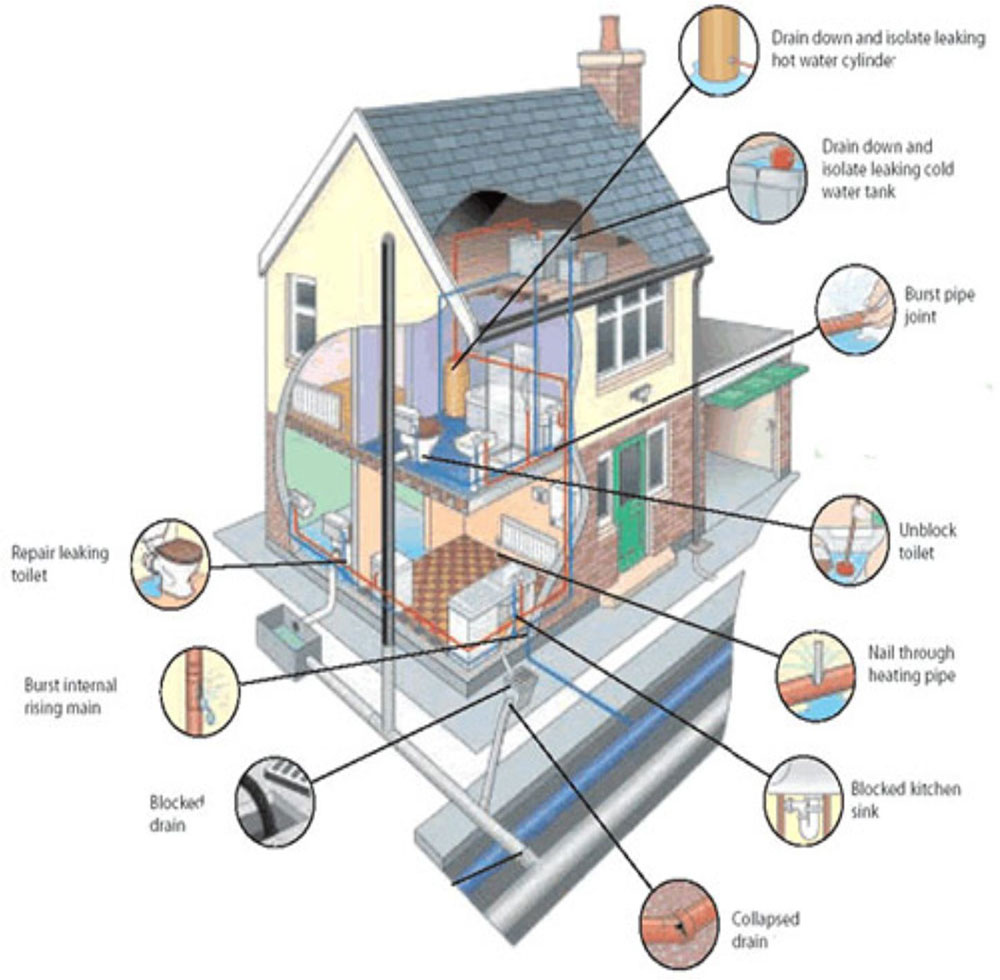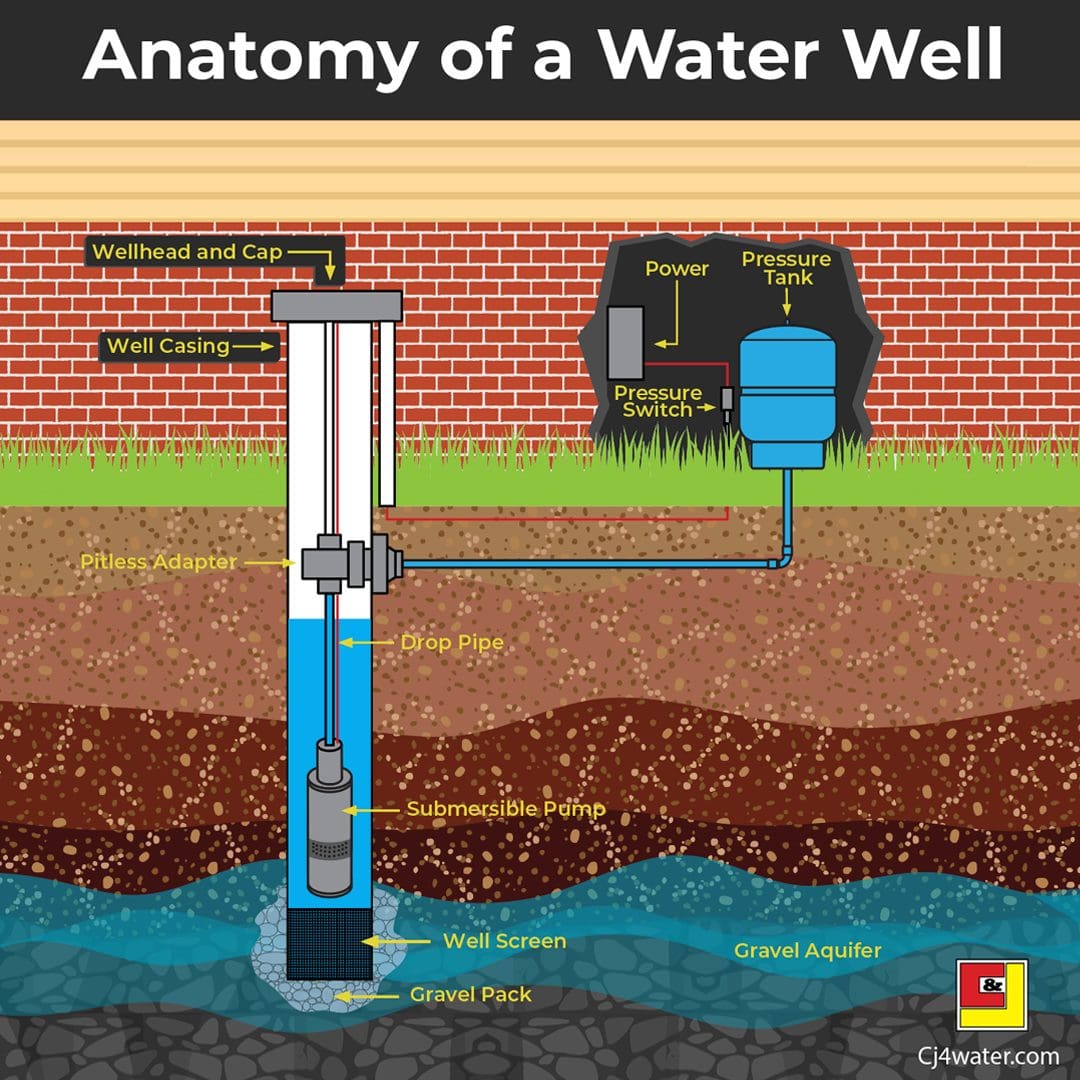Every person is bound to have his or her own theory on the subject of Exploring Your Homes Plumbing Anatomy.

Understanding exactly how your home's plumbing system works is vital for each home owner. From supplying tidy water for alcohol consumption, food preparation, and showering to safely removing wastewater, a well-kept pipes system is vital for your household's wellness and convenience. In this thorough guide, we'll explore the elaborate network that makes up your home's plumbing and offer suggestions on maintenance, upgrades, and handling common problems.
Introduction
Your home's plumbing system is more than just a network of pipelines; it's an intricate system that ensures you have accessibility to clean water and efficient wastewater removal. Recognizing its parts and exactly how they collaborate can help you protect against pricey repair services and guarantee everything runs efficiently.
Standard Elements of a Plumbing System
Pipes and Tubes
At the heart of your pipes system are the pipes and tubes that bring water throughout your home. These can be made of various products such as copper, PVC, or PEX, each with its benefits in terms of resilience and cost-effectiveness.
Components: Sinks, Toilets, Showers, and so on.
Fixtures like sinks, bathrooms, showers, and bathtubs are where water is made use of in your house. Understanding just how these components attach to the pipes system helps in detecting problems and intending upgrades.
Valves and Shut-off Factors
Shutoffs control the circulation of water in your plumbing system. Shut-off valves are critical during emergencies or when you require to make fixings, enabling you to isolate parts of the system without interfering with water circulation to the entire residence.
Water System System
Main Water Line
The main water line attaches your home to the community water supply or an exclusive well. It's where water enters your home and is dispersed to different fixtures.
Water Meter and Pressure Regulator
The water meter procedures your water usage, while a pressure regulator guarantees that water streams at a risk-free pressure throughout your home's plumbing system, stopping damages to pipelines and fixtures.
Cold Water vs. Hot Water Lines
Recognizing the distinction in between cold water lines, which provide water directly from the primary, and warm water lines, which carry warmed water from the hot water heater, assists in troubleshooting and planning for upgrades.
Water drainage System
Drain Pipes Water Lines and Traps
Drain pipelines lug wastewater away from sinks, showers, and toilets to the sewer or sewage-disposal tank. Traps stop sewage system gases from entering your home and additionally trap particles that could trigger clogs.
Ventilation Pipelines
Ventilation pipes enable air right into the drain system, avoiding suction that can slow down drainage and create traps to vacant. Proper air flow is crucial for keeping the stability of your plumbing system.
Importance of Appropriate Drainage
Making certain proper drainage protects against back-ups and water damage. Routinely cleansing drains and keeping catches can stop costly repairs and extend the life of your plumbing system.
Water Heater
Kinds Of Water Heaters
Water heaters can be tankless or traditional tank-style. Tankless heating systems warmth water as needed, while storage tanks keep heated water for prompt usage.
Just How Water Heaters Attach to the Pipes System
Understanding just how water heaters connect to both the cold water supply and hot water distribution lines assists in identifying problems like inadequate warm water or leakages.
Upkeep Tips for Water Heaters
On a regular basis purging your hot water heater to get rid of debris, examining the temperature setups, and inspecting for leakages can expand its life-span and boost power performance.
Usual Pipes Issues
Leaks and Their Causes
Leaks can take place as a result of maturing pipelines, loosened installations, or high water pressure. Resolving leaks without delay stops water damage and mold and mildew development.
Clogs and Clogs
Blockages in drains and commodes are often brought on by purging non-flushable products or a buildup of oil and hair. Using drainpipe screens and bearing in mind what decreases your drains can stop clogs.
Indicators of Plumbing Troubles to Look For
Low water stress, slow drains pipes, foul odors, or unusually high water expenses are signs of prospective plumbing issues that should be attended to promptly.
Pipes Maintenance Tips
Routine Inspections and Checks
Arrange annual pipes inspections to catch concerns early. Search for indications of leakages, corrosion, or mineral accumulation in taps and showerheads.
DIY Upkeep Tasks
Simple tasks like cleaning faucet aerators, checking for toilet leaks using dye tablets, or insulating subjected pipes in chilly environments can protect against significant pipes issues.
When to Call a Professional Plumber
Know when a pipes concern calls for specialist expertise. Attempting complex repairs without correct expertise can cause more damage and greater repair service expenses.
Upgrading Your Pipes System
Factors for Updating
Updating to water-efficient fixtures or changing old pipelines can improve water quality, lower water expenses, and enhance the worth of your home.
Modern Pipes Technologies and Their Benefits
Explore modern technologies like wise leakage detectors, water-saving toilets, and energy-efficient water heaters that can save cash and reduce environmental influence.
Expense Factors To Consider and ROI
Compute the in advance costs versus lasting cost savings when considering pipes upgrades. Numerous upgrades spend for themselves with reduced energy bills and less repair services.
Environmental Influence and Conservation
Water-Saving Components and Home Appliances
Mounting low-flow faucets, showerheads, and toilets can substantially reduce water usage without giving up performance.
Tips for Lowering Water Usage
Simple behaviors like repairing leaks without delay, taking shorter showers, and running complete tons of washing and dishes can preserve water and lower your energy costs.
Eco-Friendly Plumbing Options
Take into consideration lasting plumbing materials like bamboo for floor covering, which is durable and eco-friendly, or recycled glass for kitchen counters.
Emergency situation Preparedness
Actions to Take Throughout a Plumbing Emergency situation
Know where your shut-off valves are located and just how to turn off the water system in case of a burst pipe or significant leak.
Value of Having Emergency Get In Touches With Convenient
Maintain contact info for neighborhood plumbings or emergency services readily offered for fast action throughout a pipes situation.
DIY Emergency Situation Fixes (When Suitable).
Short-lived solutions like utilizing air duct tape to spot a dripping pipeline or putting a container under a trickling faucet can reduce damage until an expert plumber arrives.
Verdict.
Recognizing the makeup of your home's pipes system equips you to preserve it efficiently, saving money and time on fixings. By complying with regular maintenance regimens and staying educated regarding modern pipes modern technologies, you can ensure your pipes system operates successfully for years to find.
HOW YOUR PLUMBING SYSTEM WORKS
Which Pipes Do What?
Blue lines = fresh water supply entering the building
Red lines = hot water supply entering the building
Grey lines = pipes carrying waste away from the building and venting pipes carrying gases away from the building (through the roof)
YOUR MAIN PLUMBING SYSTEMS
There are two main plumbing systems that support your home s basic plumbing needs one that brings clean water into your home, and one that sends dirty water away from your home. Connected to the toilet, bath, shower, and other faucets in your home, these two systems keep your water flowing in the right directions.
ACCESSING FRESH WATER
Fresh and clean water is brought into your home through the main water supply line . Filtered through one pipe, this water is pressured to flow into the various fixtures in your home at any given time.
This water can be sourced from a well located on your property, a pond or river (mostly cottages), or, as in most cases, from the city s municipal water treatment centre. However, it is important to note that water that is untreated, such as the water siphoned from ponds or rivers, may not be safe to drink. Personal water supplies always need to be treated for hardness and contaminants before consumed.
MUNICIPAL WATER SUPPLIES
Improve taste and odour
Remove sediment
Eliminate hardness
Reduce chlorine
COLD WATER SUPPLY VS. HOT WATER SUPPLY
Cold water flows into your home or building through the service line, which then distributes hot or cold water to your fixtures. This line is most commonly run through a central column that runs floor to floor. Hot water runs in short and straight pipes as the longer the pipeline, the more heat that will be lost in the transfer. Having shorter pipes also allows residents to access hot water more quickly.
WASTE WATER SYSTEM
Your wastewater system is divided into two parts pipes that send wastewater away from your home and venting pipes that send sewer gas away from your home. Sewage water travels through pipes that flush the water and waste towards local sewers that are operated and managed by your city or town. Most sewer systems rely on gravity to move the wastewater to where it needs to go.
The further away from your toilet or sink, the larger wastewater pipes become. This allows for waste to be disposed of from various parts of your home or business at once without pipe blockages. The angle and flow of these pipes are also essential for keeping your waste pipes clear of build up.
https://harrisplumbing.ca/how-your-home-plumbing-system-works/

HOW YOUR PLUMBING SYSTEM WORKS
Which Pipes Do What?
YOUR MAIN PLUMBING SYSTEMS
There are two main plumbing systems that support your home s basic plumbing needs one that brings clean water into your home, and one that sends dirty water away from your home. Connected to the toilet, bath, shower, and other faucets in your home, these two systems keep your water flowing in the right directions.
ACCESSING FRESH WATER
Fresh and clean water is brought into your home through the main water supply line . Filtered through one pipe, this water is pressured to flow into the various fixtures in your home at any given time.
This water can be sourced from a well located on your property, a pond or river (mostly cottages), or, as in most cases, from the city s municipal water treatment centre. However, it is important to note that water that is untreated, such as the water siphoned from ponds or rivers, may not be safe to drink. Personal water supplies always need to be treated for hardness and contaminants before consumed.
MUNICIPAL WATER SUPPLIES
COLD WATER SUPPLY VS. HOT WATER SUPPLY
Cold water flows into your home or building through the service line, which then distributes hot or cold water to your fixtures. This line is most commonly run through a central column that runs floor to floor. Hot water runs in short and straight pipes as the longer the pipeline, the more heat that will be lost in the transfer. Having shorter pipes also allows residents to access hot water more quickly.
WASTE WATER SYSTEM
Your wastewater system is divided into two parts pipes that send wastewater away from your home and venting pipes that send sewer gas away from your home. Sewage water travels through pipes that flush the water and waste towards local sewers that are operated and managed by your city or town. Most sewer systems rely on gravity to move the wastewater to where it needs to go.
The further away from your toilet or sink, the larger wastewater pipes become. This allows for waste to be disposed of from various parts of your home or business at once without pipe blockages. The angle and flow of these pipes are also essential for keeping your waste pipes clear of build up.
https://harrisplumbing.ca/how-your-home-plumbing-system-works/
I'm just very interested by The Inner Workings of Your Home's Plumbing and I am praying you enjoyed the new entry. Sharing is nice. Helping people is fun. Thank-you for your time invested reading it.
Check This Out